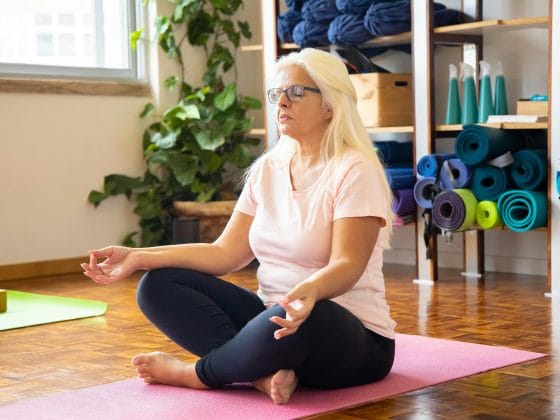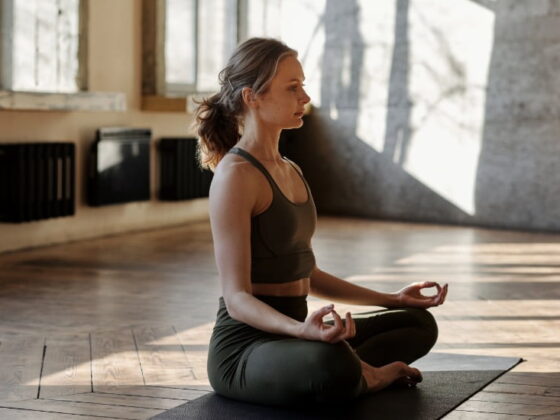In the realm of alternative wellness, breathwork and yoga have stood the test of time. Not only are these exercises for the body, but they remain profound tools for helping to transform the mind and elevate the spirit.
Yoga tends to be thought of in the terms of physical postures, or asanas. However, another branch of yoga is entirely dedicated to the very essence of life itself —breath. When we combine breathwork and the physical postures of yoga, we can take our practice into a deeper level of mindfulness, presence, and transformation.
Breathwork isn’t just about breathing deeply to center yourself during your yoga practice, it’s about synchronizing your breathing pattern with your movements allowing you to tap into the immense energy that already exists within you, and use it to propel yourself into the expansion and alignment you’ve been searching for.
Whether you are a seasoned yoga instructor or simply a dedicated practitioner wanting to enhance their yoga routine, incorporating breathwork into your sessions will elevate your practice in ways you never thought were possible.
Why Breathwork in Yoga is a Game-Changer
Breathwork is an intentional and conscious practice of manipulating your breath to achieve a specific goal for the mind and body. If the asanas are the physical foundation of your practice, breathwork is the catalyst that powers the body to move deeper into alignment allowing the transformation to truly begin.
Breath as the Bridge Between Mind and Body
Breathing is an ever-present part of our life experience. We do it all day and all night without even giving it much thought. But what happens when we channel this life force energy and use it for our own benefit? When we bring awareness to our breath and attempt to learn how to control it, we can connect on a deeper level with our body, mind, and spirit. Breathwork is the anchor to the present moment as it creates space for clarity and promotes peace within.
With each controlled breath, you return to the present moment. You can more easily leave behind the worries of today and tomorrow and focus on what really matters—this exact moment you’re living. Breathwork provides a tool that allows you to truly be in the yoga pose, instead of simply moving through it with routine. Being in a state of mindfulness promotes a deep connection with yourself, enhancing the mind-body relationship many yogis are seeking to create.
Stress Reduction and Relaxation
Most people associate breathwork with stress reduction. Deep, slow breathing activates the parasympathetic nervous system, helping to calm the body and reduce the fight or flight response. Today, we experience so much stress from the “go, go, go” mentality of society, many of us are constantly living in a state of stress. This is why many people turn to yoga to destress and promote a general feeling of calm and peace in their lives. Imagine taking that to a whole other level with breathwork.
As we move through our yoga practice with intention and focus on our breath, we learn how to surrender to the moment. As we begin to breathe deeply, we shift from a state of stress and into relaxation and restoration. This deep sense of calm creates an environment for the body to release built-up tension, calm the nervous system, and reduce feelings of anxiety.
Increased Focus and Mental Clarity
Breathwork also improves mental focus, which is essential for a successful yoga practice. When we focus on our breath, it helps to quiet the mental chatter and distractions that can arise during practice. It creates a sense of stillness and mental clarity, allowing us to move through each pose with intention and purpose.
Yoga breathwork can sharpen your mental faculties, leading to better concentration and enhanced problem-solving abilities in everyday life. As your breath slows and deepens, your mind clears, leaving you more present and aware of the subtleties of your body.
Moreover, deep breathing boosts oxygen flow to the brain and muscles, enhancing your focus and providing the clarity needed to refine your technique. This is especially important when holding challenging postures or engaging in advanced asanas. With the right breath, you are able to maintain calmness and poise even when faced with difficulty.
Yoga Breathwork Techniques to Elevate Your Practice
There are hundreds of types and techniques in breathwork, each offering a different way to enhance your daily life. When it comes to utilizing breathwork in a yoga practice, there are many different powerful techniques that will elevate and add depth to your session.
- Ujjayi Pranayama (Victorious Breath)
Sometimes called “ocean breath” from the sound this technique creates, Ujjayi pranayama involves constricting the throat as you breathe in and out. This creates a soothing, rhythmic sound that can help calm the mind and create a steady focus while it also builds internal heat, which is especially helpful during dynamic yoga practices like Vinyasa or Ashtanga. Ujjayi Pranayama helps regulate your breath and provides a sense of grounding in each movement. - Nadi Shodhana (Alternate Nostril Breathing)
Nadi Shodhana, a balancing breathwork technique, has the practitioner use alternating nostrils to breathe. This is believed to balance the two hemispheres of the brain and calm the mind while clearing mental fog and creating a sense of balance in the central nervous system. Try using Nadi Shodhana as a transition between poses or utilize this technique at the end of your practice when you want to cultivate a sense of peace. - Kapalbhati (Skull Shining Breath)
This energizing breath involves forceful exhalations through the nose, which helps to clear out the lungs and invigorate the body. It’s a great way to stimulate the respiratory system and reset your energy levels. When combined with dynamic movements, Kapalbhati creates a sense of internal lightness and helps reduce feelings of sluggishness. Use it to rejuvenate and reset during your practice, especially if you’re feeling fatigued or unmotivated. - Bhastrika (Bellows Breath)
A technique designed to boost energy levels, Bhastrika involves quick, forceful inhales and exhales. This breathwork technique can help clear away any mental fog, reinvigorate the body, and provide an instant energy boost. It is ideal for revitalizing the body during or after a long practice or as a prelude to more intense movement sequences.
The Power of Combining Yoga and Breathwork
Breathwork in yoga does more than just support physical postures—it actually enhances them. The breath, or prana, is the bridge between movement and stillness, providing a sense of fluidity and ease as you move from one posture to the next. When you integrate breathwork into your yoga practice, each asana becomes a more mindful and intentional movement.
Mindful Movement and Enhanced Flexibility
When you combine breathwork with the asanas, you get to experience each posture on a deeper level. Not only will you physically be able to get deeper into each pose, increasing flexibility, but you will also mentally and emotionally experience the posture with more depth and understanding. Breath anchors you into the present moment, fostering a strong mind-body connection and fostering greater flexibility—mentally and physically.
Emotional and Spiritual Growth
In addition to increased mindfulness and enhanced flexibility, breathwork has immense emotional and spiritual benefits. When we focus on integrating the breath into our yoga practice, we create space for emotional release and healing.
Breathwork is thought to help release emotions that are trapped, bringing them to the surface and allowing you to explore and release these feelings in a calm and collected way.
Not only does this allow you to dive deeper into self-exploration, but it also gives you the confidence to handle any emotions that may arise, promoting immense personal growth and expansion.
Why Yoga Teachers Should Explore Breathwork Training
Breathwork provides your students with a richer and more comprehensive yoga experience. As a professional yoga instructor, your students are relying on you to help guide them through not only the physical postures, but also help them expand their minds and deepen their mindfulness.
Becoming a Certified Breathwork Facilitator allows you to take your students on a journey of self-exploration by giving them the tools to help them stay focused, increase their energy, and improve their overall well-being.
If you’re ready to take your teaching to the next level, it may be time to pursue online breathwork certification for yoga teachers. This training will equip you with the skills and knowledge to guide your students through various breathwork techniques, enhancing their yoga practice in ways that deepen their understanding and transformation.
Conclusion
Breathwork is a powerful tool that should not be underestimated. When incorporated into a yoga practice, it can create a more profound and transformative experience that nurtures the body, mind, and spirit.
Not only does breathwork in yoga enhance flexibility, improve mental clarity, and reduce stress, it also adds depth to the physical postures. Utilize breathwork to tap into the very essence of life and learn how to move through the world with more intention and a greater sense of mindfulness.



